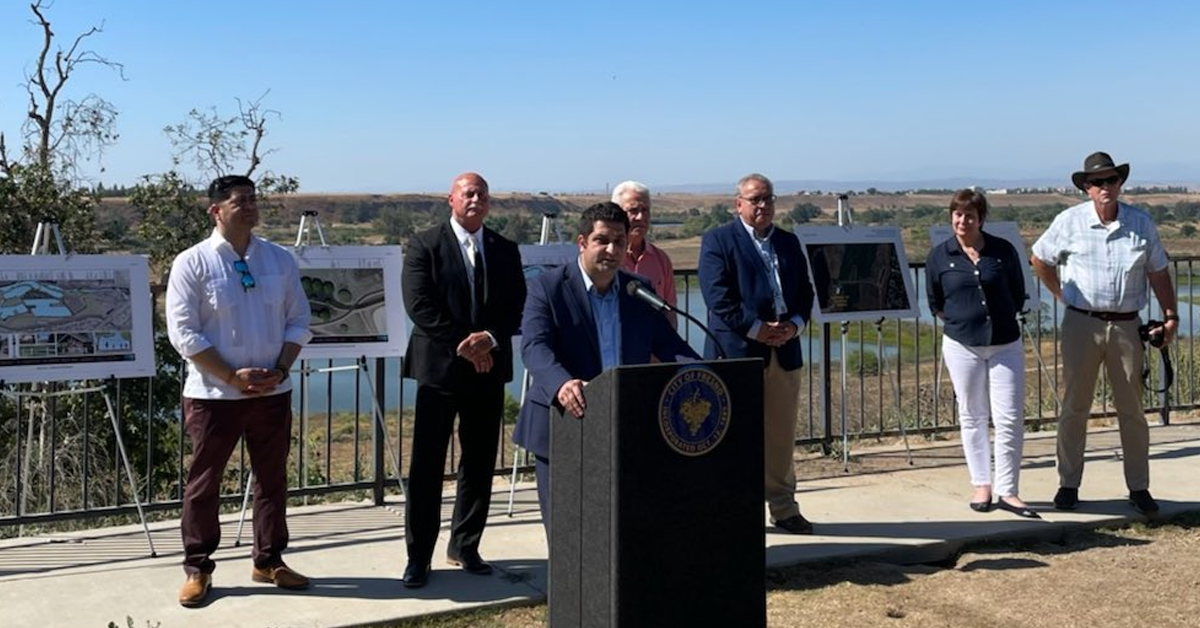Ratepayers in 2015 were persuaded by City Hall to spend $429 million to upgrade Fresno’s ancient and crumbling water system.
Turns out all that new infrastructure still isn’t enough.
Fresno – welcome to the new era of water politics.
The City Council within the month is expected to decide whether to approve a new developer mandate called “water capacity fees.”
What are these fees? Public Utilities Planning Manager Michael Carbajal succinctly answered the question in a recent report to the City Council.
“Water capacity fees,” Carbajal wrote, “are one-time fees charged to new or expanded connections to the City’s public water supply system, and they are designed to recover the costs of water supply infrastructure, assets and facilities that benefit new or expanded connections to the public water supply system.”
In other words, they’re another developer impact fee.
Fresno in the mid-1970s was a national leader in making (or attempting to make) growth pay its fair share of infrastructure costs. City Manager Ralph Hanley, a no-nonsense Marine with a ton of policy smarts but not a whole lot of tact, got the council to approve a system of Urban Growth Management (UGM) fees.
A key feature of UGM system was the connection between geography and expenditure. Fresno’s outlying areas were divided into UGM areas. Money generated by growth in a specific UGM area was spent only in that area. This limitation frustrated city officials for decades. Their reasoning: New growth impacts service delivery systems throughout the city.
No need here to go into UGM’s other alleged shortcomings. It’s enough to note that City Hall for the past 40 years has been continuously reforming and recalculating and renaming the various fees that fall under the UGM umbrella.
City Hall has lots of different water fees for developers. Some are UGM fees, some go by other names.
Again, I go to Carbajal for clarity: “These fees are more than 10 years old and (1) do not fully recover the costs of capacity available for new development in the City’s existing water supply infrastructure; (2) do not fully recover the costs to provide water supply infrastructure needed to meet the demands of new or expanded development; (3) do not recover any costs from non-Urban Growth Management areas to provide water supply infrastructure needed to meet the demands of new or expanded development; and (4) are administratively burdensome with almost 150 separate Urban Growth Management funds, predominately for water and sewer services.”
The solution: Condense and simplify this mess into a single bill, the Water Capacity Fee.
City Hall hired a consultant to do a study. The goal: Develop a fee schedule fair to everyone.
“Based on the findings of the independent consultant,” Carbajal wrote, “it is recommended that the City transition to a citywide water capacity fee that can be applied uniformly and consistently to all new or expanded connections to the City’s public water supply system, regardless of the geographic location of the development within the City’s water service area. The proposed water capacity fee will recover an equitable and proportionate share of water supply facility costs that benefit new or expanded connections to the public water supply system.”
Carbajal’s report includes a list of recommended fees based on the size of the development’s water meter. I sense the list is causing heartburn among local developers. The City Council was supposed to debate the proposal (which originated in Public Utilities, headed by Tommy Esqueda) on Dec. 8. The council punted. Now I’m told the debate may come in early February.
My interest isn’t in the size of the proposed fees. My interest was sparked by the final sentence of the Carbajal paragraph quoted above: “In addition, the proposed water capacity fees fully consider the groundwater quality and quantity issues that currently exist for the City’s public water supply system and the compliance requirements of the SGMA.”
SGMA stands for the Sustainable Groundwater Management Act – courtesy of Sacramento.
Bottom line: The new water capacity fees are tied to coordinated efforts at various levels of government to permanently change our water consumption habits. Fundamentally, that means packing more people into smaller areas and stigmatizing certain uses of water (lawn irrigation, backyard swimming pools, for example).
Which is fine and dandy if that’s what the majority wants. We’re a democracy. But that $429 million system upgrade complicates things.
My most recent CVObserver story reviewed City Hall’s new partnership agreement with the Fresno Irrigation District. The deal was approved by the council in December. The FID deal and water capacity fees should have been debated in tandem. This is made clear by Carbajal’s report — much of the 10-page document is filled with summaries of water availability challenges, state water law and groundwater-level concerns. The staff report on the FID contract contains pretty much the same summaries.
I didn’t read every word of Carbajal’s report. But I read most of it. I didn’t see estimates of anticipated revenue from the new fees over the next decade or two.
Carbajal did explain where the money would go.
Fifty percent will reimburse developers who are required by City Hall to build water supply systems.
Fifty percent, Carbajal wrote, will help “repay loans or other debt financing instruments used by the City to plan, permit, design, and construct water supply facilities to serve new or expanded connections to the City water system. The priority for applying this 50-percent Water Capacity Fee allocation to existing loans or debt financing instruments shall be based on the date Council approved the loan or debt financing instrument. The highest priority shall be assigned to the oldest debt and financing instruments.”
City Hall accepted hundreds of millions of dollars in state loans for construction (still going on) of the upgraded water system at the heart of the Recharge Fresno project. Fresnans were told that their water rates had to double over a five-year period to begin repaying the loans (what happens to rates after five years is a scary thought). Fresnans were told that they must pay for their water based on consumption – the more you use, the more you pay. At the same time, Fresnans were told to conserve to unprecedented degrees.
In a nutshell: We need to sell water to repay the loans; selling water means using water; homeowners who use water are outcasts.
As I wrote in my recent CVObserver story, the new FID deal sure looks (to a layman like me) like a Sacramento-inspired plan to leverage the Sustainable Groundwater Management Act and all of its side issues into a campaign to prevent Fresnans from using too much of their entitled river water, thereby generating surplus water to be used by FID farmers and other water-starved areas of the Valley.
And where would the money generated by the sale of this surplus river water go? Twenty-five percent would go to FID. But the remaining money would go the city’s Water Division enterprise fund (25%) and a new Water Supply Development Fund (50%). The latter fund, according to city documents, could be spent any number of places – including the financing of groundwater recharge projects. You know, like the $429 million Recharge Fresno project approved by the council in February 2015 and financed by all those state loans that need a dedicated and secure repayment source (which was supposed to be ratepayers’ monthly checks … until suburban homeowners apparently began conserving too much).
The wonderful thing about the proposed Water Capacity Fees is that developers won’t actually pay them. The fees will be passed on to the end consumer.
For the most part, that will be owners of new homes.
The way things are going, City Hall won’t care if all the lawns are Astroturf.










